8 Best Food to Eat in Winter in India
8 Best Food to Eat in Winter in India
Makki Ki Roti and Sarson Ka Saag

Makki ki roti is a type of flatbread made with cornmeal, and it is often served with sarson ka saag, which is a spicy and flavorful dish made with mustard greens.
Sarson ka saag is typically made by cooking mustard greens with spices, tomatoes, and other vegetables, and then pureeing the mixture into a small amount of oil. It is traditionally served with makki ki roti, and the two dishes are the best food to eat in winter in India.
Makki ki roti and sarson ka saag are both nutritious foods that can provide a variety of health benefits.
Here are a few potential benefits of these dishes:
Cornmeal, which is the main ingredient in makki ki roti, is a good source of fiber and essential nutrients like B vitamins, iron, and zinc. It is also relatively low in calories and can be a good choice for people who are trying to maintain a healthy weight.
Mustard greens, which are the main ingredient in sarson ka saag, are a rich source of vitamins and minerals, including vitamin K, vitamin A, and vitamin C. They also contain antioxidants, which can help protect overall health.
Both dishes are low in fat and cholesterol, which can make them a good choice for people who are trying to maintain a healthy heart.
The combination of makki ki roti and sarson ka saag can provide a balanced meal that includes a variety of nutrients, including protein, fiber, and essential vitamins and minerals. This can help support overall health and well-being.
Gajar Ka Halwa
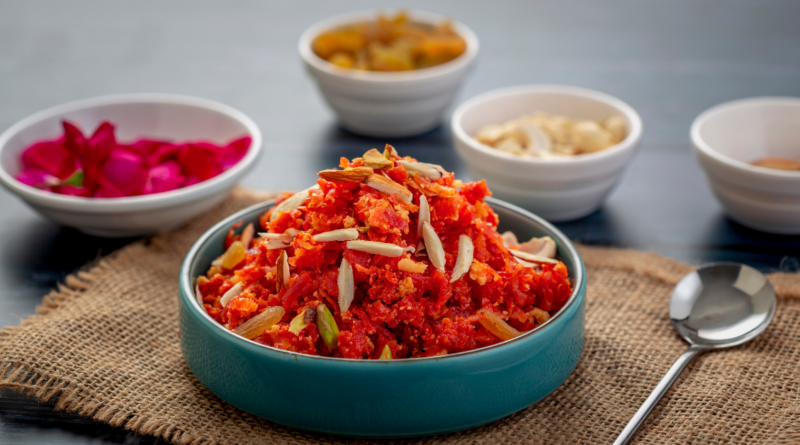
Gajar ka halwa is also on the list of the best food to eat in winter in India traditional Indian dessert made with grated carrots, milk, sugar, and a variety of ingredients. It is often served during special occasions and is known for its sweet, rich flavor and creamy texture.
To make gajar ka halwa, the grated carrots are cooked with milk and sugar until they are soft and tender. The mixture is then flavored with ingredients like cardamom and saffron, and sometimes nuts like almonds or pistachios are added as well.
The finished halwa is typically garnished with a sprinkle of nuts or dried fruit before it is served. Gajar ka halwa is another best winter food items in India, an indulgent dessert that is not typically considered a healthy food.
However, it does contain some nutrients that may provide some potential health benefits.
Some potential benefits of gajar ka halwa:
Carrots, which are the main ingredient in gajar ka halwa, are a good source of fiber, vitamin K, and potassium. They also contain antioxidants, which can help in overall health improvement.
The milk used in gajar ka halwa is a good source of protein, calcium, and other essential nutrients. It is also a rich source of B vitamins, which can support energy production and help maintain healthy skin and hair.
The ingredients used in gajar ka halwa, such as cardamom and saffron, have been used in traditional medicine for centuries and may have some potential health benefits.
Cardamom has been used to help with digestion and freshen breathing, while saffron has been used to help with anxiety and depression.
As with any sweet treat, it is important to enjoy gajar ka halwa in moderation as part of a balanced diet. It is high in sugar and calories, and should not be eaten as a regular part of a healthy diet.
Gond Ke Laddoo

Gond ke laddoo is another best food to eat in winter in India, This is a type of Indian sweet made with a type of edible gum known as gond, which is also called tragacanth. Gond is a natural substance that is obtained from the sap of certain trees and is known for its thickening and binding properties.
In Indian cooking, it is often used to make laddoos, which are round, sweet balls made with a mixture of gond, flour, and sugar. Gond ke laddoo is typically flavored with spices like cardamom and nutmeg, and they may also contain nuts or dried fruit.
They are popular winter food items and are believed to have warming properties that can help with colds and coughs.
Gond ke laddoo is a sweet and considered the best food to eat in winter in India, It contains some nutrients that may provide some potential health benefits.
Some potential benefits of gond ke laddoo are:
Gond, which is the main ingredient in gond ke laddoo, is a good source of fiber and is believed to have medicinal properties. It is often used in traditional medicine to treat a variety of ailments, including respiratory problems, digestive issues, and joint pain.
The spices used in gond ke laddoo, such as cardamom and nutmeg, have been used in traditional medicine for centuries and may have some potential health benefits.
The nuts and dried fruit that may be used in gond ke laddoo are good sources of protein, fiber, and essential nutrients like vitamin E, magnesium, and potassium.
As with any sweet treat, it is important to enjoy gond ke laddoo in moderation as part of a balanced diet. They are high in sugar and calories, and should not be eaten as a regular part of a healthy diet.
Nimona
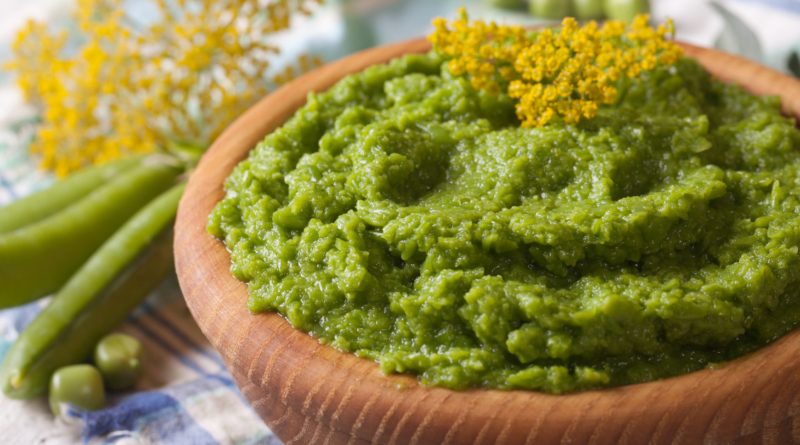
Nimona is a type of spicy, tangy, and sweet Indian dish made with green peas and a variety of spices. It is typically served as a side dish or snack, and is popular in Northern India, especially in the states of Uttar Pradesh and Bihar.
To make nimona, green peas are cooked with spices like cumin, mustard seeds, and turmeric, and then mixed with a tomato-based sauce that is flavored with ginger, garlic, and green chilies.
The finished nimona is typically garnished with fresh cilantro and served hot. It is often enjoyed with roti or rice.
Nimona is the best food to eat in winter in India, a flavorful and nutritious dish that can provide a variety of health benefits.
Here are a few potential benefits of nimona:
Green peas, which are the main ingredient in nimona, are a good source of fiber, protein, and essential nutrients like vitamin K, vitamin C, and potassium.
The spices used in nimona, such as cumin, mustard seeds, and turmeric, have been used in traditional medicine for centuries and may have some potential health benefits.
Cumin is believed to help with digestion and may have anti-inflammatory properties, while turmeric is a powerful antioxidant that has been shown to have a variety of potential health benefits.
The tomato-based sauce used in nimona is a good source of lycopene, which is a powerful antioxidant that has been shown to have a variety of potential health benefits, including reducing the risk of heart disease and certain types of cancer.
Additionally, Nimona is the best food to eat in winter in India because peas are highly available and produced in winter. Nimona is a low-fat, low-calorie dish that can be a good choice for people who are trying to maintain a healthy weight.
Dry Fruits
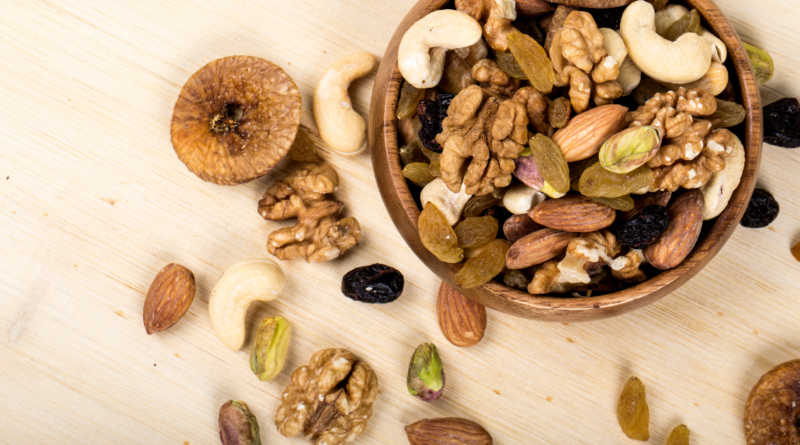
Dry fruits are fruits that have had moisture removed through a drying process, which allows them to be stored for longer periods of time. Some common types of dry fruits include raisins, apricots, prunes, dates, figs, and cranberries.
Dry fruits are often considered to be the best food to eat in winter in India and a healthy snack because they are a good source of fiber, vitamins, and minerals, and they contain antioxidants, which can help protect against cell damage and support overall health and keep you warm in winter.
They are also relatively low in calories and can be a good choice for people who are trying to maintain a healthy weight. However, it is important to be mindful of portion sizes when eating dry fruits, as they can be high in sugar and calories.
Dry fruits are the best food to eat in winter in India, It is also considered a healthy snack that can provide a variety of health benefits.
Some of the potential benefits of dry fruits are:
Fiber: Dry fruits are a good source of fiber, which is an important nutrient that helps to support healthy digestion and can help reduce the risk of constipation.
Vitamins and minerals: Dry fruits are a good source of essential vitamins and minerals, such as vitamin A, vitamin C, potassium, and iron. These nutrients are important for maintaining good health and supporting the proper functioning of the body.
Antioxidants: Dry fruits are a rich source of antioxidants, which are compounds that can help protect against cell damage and support overall health.
Low in calories: Dry fruits are relatively low in calories, which can make them a good choice for people who are trying to maintain a healthy weight.
Heart health: Some dry fruits, such as raisins and prunes, are high in antioxidants and have been shown to have potential benefits for heart health.
Weight management: Dry fruits can be a good snack option for people who are trying to manage their weight, as they are low in calories and can help to curb hunger cravings.
Bajre Ki Khichdi

Bajre ki khichdi is also on the list of the best food to eat in winter in India, a traditional Indian dish made with millet bajra in Hindi and a variety of vegetables. It is a hearty and comforting meal that is often eaten during the winter months in North India.
To make bajre ki khichdi, the millet is cooked with spices, vegetables, and lentils until it is soft and tender. The finished khichdi is typically garnished with fresh cilantro and served hot. It is often accompanied by a side of yogurt or a spicy pickle.
Bajre ki khichdi is a nutritious and satisfying winter food item that is easy to digest and can be a good choice for people who are looking for healthy food.
Bajre ki khichdi is a nutritious and satisfying meal that can provide various health benefits.
Here are a few potential benefits of bajre ki khichdi:
Millet, which is the main ingredient in bajre ki khichdi, is a good source of fiber, protein, and essential nutrients like B vitamins, iron, and zinc.
The vegetables used in bajre ki khichdi are a good source of fiber, vitamins, and minerals, and they can help to add flavor and nutrition to the dish.
Lentils, which are often used in bajre ki khichdi, are a good source of protein, fiber, and essential nutrients like iron, potassium, and folate. They are also relatively low in calories and can be a good choice for people who are trying to maintain a healthy weight.
Bajre ki khichdi is a low-fat, low-cholesterol meal that can be a good choice for people who are trying to maintain a healthy heart.
The combination of millet, vegetables, and lentils in bajre ki khichdi can provide a balanced meal that includes a variety of nutrients, including protein, fiber, and essential vitamins and minerals. This can help support overall health and well-being.
It is important to be mindful of portion sizes when eating bajre ki khichdi, as it is a high-calorie dish. Enjoying it as part of a balanced diet can help ensure you get all the nutrients you need while maintaining a healthy weight.
Khajoor ka Doodh
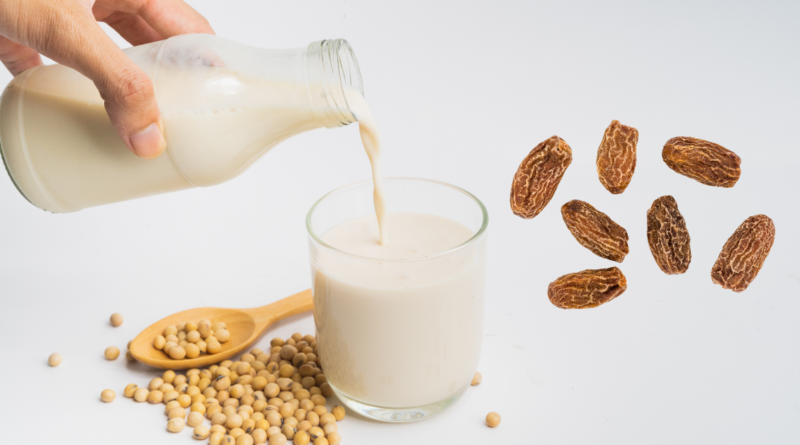
Khajoor ka doodh is a traditional drink made with dates and milk. It is a popular drink in India and is believed to have a variety of health benefits. To make khajoor ka doodh, dates are soaked in water for a few hours or overnight, and then they are blended with milk until a smooth, creamy consistency is achieved.
The finished drink is typically garnished with a sprinkle of nuts or spices like cardamom or cinnamon before it is served. It is often a nourishing and satisfying drink, especially during the winter months.
Khajoor ka doodh is a drink that can be added to the list of best food to eat in winter in India, mainly it is taken after a meal and keeps you warm in winter.
Khajoor ka doodh is a nourishing and satisfying drink that can provide a variety of health benefits.
Some potential benefits of khajoor ka doodh are:
Dates, which are the main ingredient in khajoor ka doodh, are a good source of fiber, vitamins, and minerals. Milk, which is the other main ingredient in khajoor ka doodh, is a good source of protein, calcium, and other essential nutrients.
It is also a rich source of B vitamins, which can support energy production and help maintain healthy skin and hair.
The combination of dates and milk in khajoor ka doodh can provide a balanced drink that includes a variety of nutrients, including protein, fiber, and essential vitamins and minerals.
Khajoor ka doodh is a low-fat, low-cholesterol drink that can be a good choice for people who are trying to maintain a healthy heart.
Some people believe that khajoor ka doodh has soothing and calming properties and may be helpful in relieving stress and anxiety. The main reason to add khajoor ka doodh in the list of best food to eat in winter in India is because khajoor are used mainly in winter and are good for health.
Palak Paneer
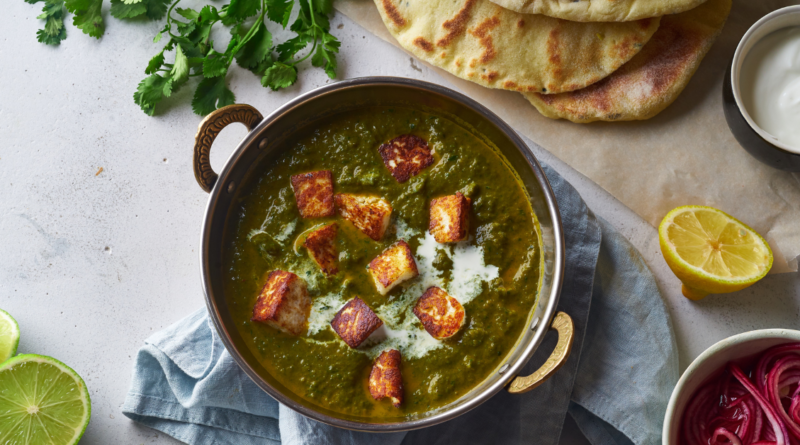
Palak paneer is the best food to eat in winter in India. It is an Indian dish made with paneer (a type of Indian cheese) and palak (spinach). It is a flavorful and nourishing dish that is often served with rice or roti.
To make palak paneer, the paneer is cut into cubes and cooked with spices and palak until it is soft and tender.
The finished dish is typically garnished with fresh cilantro and served hot. Palak paneer is a nutritious and satisfying dish that is high in protein and vitamins and minerals.
It is also relatively low in calories and can be a good choice for people who are trying to maintain a healthy weight.
Palak paneer is a nutritious and satisfying winter food items in India, a dish that can provide a variety of health benefits.
Here are a few potential benefits of palak paneer:
Paneer, which is the main ingredient in palak paneer, is a good source of protein, calcium, and other essential nutrients. It is also relatively low in calories and can be a good choice for people who are trying to maintain a healthy weight.
Spinach, which is the other main ingredient in palak paneer, is a rich source of vitamins and minerals, including vitamin K, vitamin A, and vitamin C.
The combination of paneer and spinach in palak paneer can provide a balanced meal that includes a variety of nutrients, including protein, fiber, and essential vitamins and minerals. This can help support overall health and well-being.
Palak paneer is a low-fat, low-cholesterol dish that can be a good choice for people who are trying to maintain a healthy heart.
Some people believe that the combination of paneer and spinach in palak paneer may have anti-inflammatory properties and may be helpful in reducing the risk of certain chronic diseases.
Read More: Top 20 Winter Season Food Items In India

